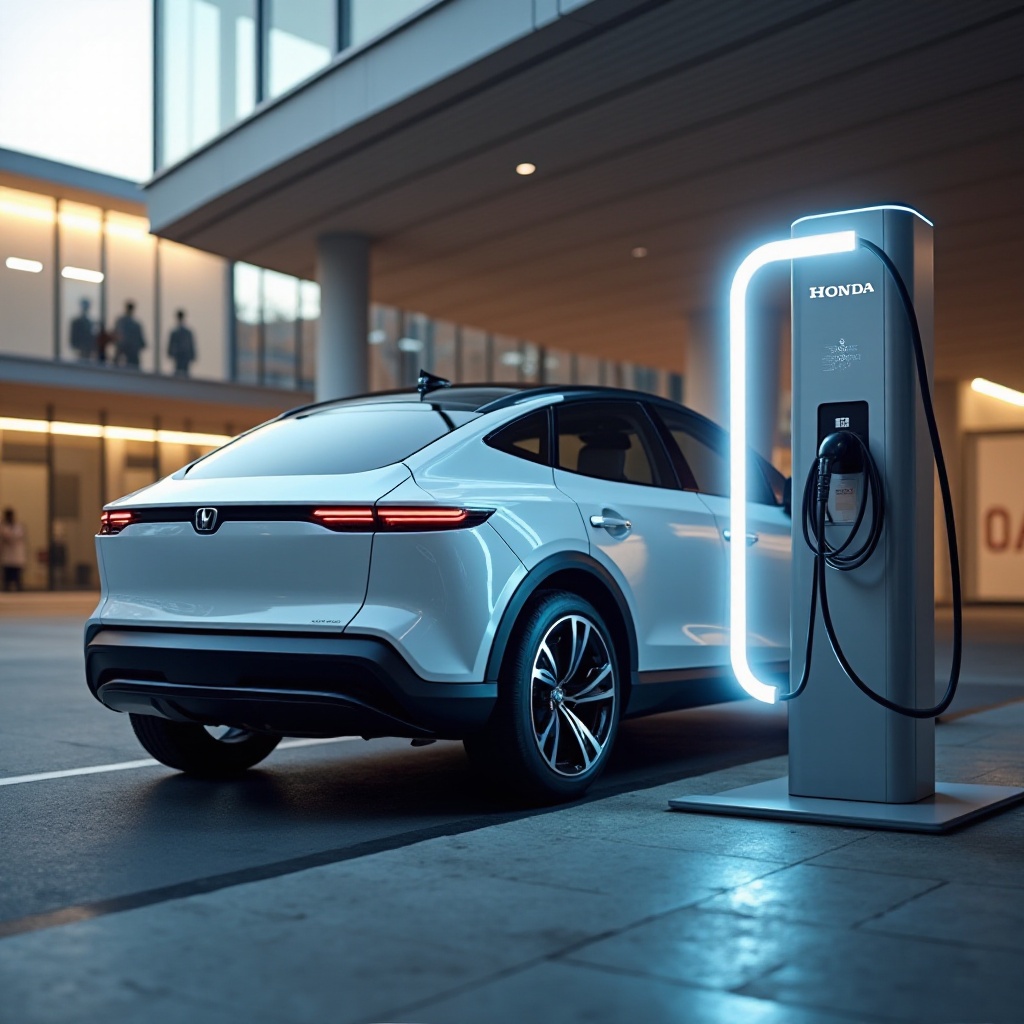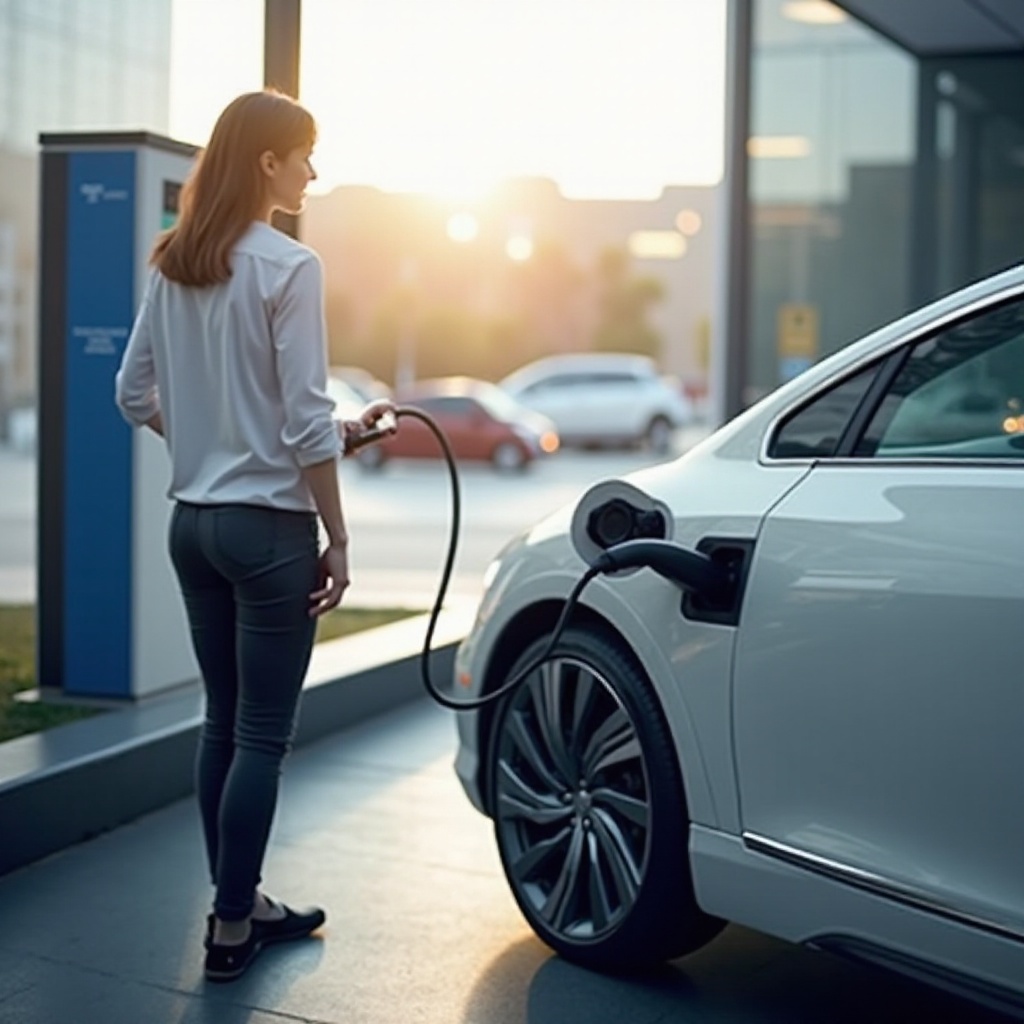Introduction
Understanding the charging time for your Honda Prologue electric vehicle (EV) is crucial for efficient travel planning and optimal battery maintenance. The question ‘How long to charge Honda Prologue?’ is common among new EV owners. This detailed guide covers everything you need to know, including factors influencing the charging time, the different types of chargers available, charging durations for each type, and best practices for maintaining battery health. Whether you’re new to the world of electric cars or looking to optimize your charging habits, this guide has you covered.

Factors Influencing Charging Time for Honda Prologue
Battery Capacity
The battery capacity of the Honda Prologue is one of the primary factors affecting its charging time. Higher capacity batteries take longer to charge compared to smaller ones. The Honda Prologue’s battery is designed to provide a balance between range and charging efficiency. Understanding the specifics of your vehicle’s battery will help you plan your charging times more effectively.
Charger Type
Not all chargers are created equal. The type of charger you use significantly impacts the charging duration. Generally, chargers are categorized into Level 1, Level 2, and DC Fast Chargers. Each type of charger has different power outputs and, consequently, different charging times. We will discuss these differences in detail in the next sections.
External Conditions
External factors such as temperature and battery age also influence the charging speed. Batteries tend to charge slower in extreme temperatures (both hot and cold) to prevent overheating or freezing. Additionally, an older battery may not hold a charge as well as a new one, hence taking longer to charge. Keeping these factors in mind will help optimize your charging schedule.

Types of Chargers for Honda Prologue
Level 1 Chargers
Level 1 chargers are the most basic type of EV charger. They are standard household chargers that use a 120-volt outlet. These chargers are readily available and usually come with the purchase of the EV. Although convenient, they are the slowest option for charging your Honda Prologue.
Level 2 Chargers
Level 2 chargers use a 240-volt outlet and are commonly found in public charging stations and home charging setups. These chargers offer faster charging speeds compared to Level 1 chargers and are well-suited for overnight home charging or quick top-ups at public stations.
DC Fast Chargers
DC Fast Chargers are the most advanced charging option, offering the quickest charging times. These chargers use direct current (DC) to charge the vehicle’s battery directly, bypassing the onboard charger. They are often found at dedicated EV charging stations and can significantly reduce the amount of time needed to charge your Honda Prologue.
Charging Times for Different Charger Types
Understanding the charging times associated with each charger type helps you decide which option best suits your needs.
Home Charging (Level 1)
When using a Level 1 charger, you can expect your Honda Prologue to charge at a rate of about 3-5 miles of range per hour. This means that a full recharge from empty can take up to 20-24 hours. While slow, this method is convenient for overnight charging when immediate use of the vehicle isn’t necessary.
Public and Home Stations (Level 2)
Level 2 chargers can charge your Honda Prologue at a rate of 10-30 miles of range per hour. A complete charge can take around 8-12 hours. This speed is particularly useful for overnight home charging or for quick top-ups during the day at public charging stations, significantly reducing the overall charging time.
Quick Charging Options (DC Fast Chargers)
DC Fast Chargers dramatically reduce the charging time for your Honda Prologue. These chargers can provide up to 80% charge in approximately 30-45 minutes, depending on the specific charger and battery capacity. This option is ideal for long trips where quick recharges are necessary.
Optimal Charging Practices
To maximize the efficiency and lifespan of your Honda Prologue’s battery, follow these optimal charging practices:
Best Time to Charge
Charging during off-peak hours, typically late at night or early in the morning, can reduce charging costs and put less strain on the power grid. Many electric utility providers offer reduced rates during these times, making it more economical to charge your EV.
Managing Battery Health
Avoid extreme charging habits such as frequently letting your battery drop to 0% or charging to 100%. Maintaining a mid-range charge level (around 20-80%) can extend the battery’s lifespan. Additionally, minimizing exposure to extreme temperatures will help maintain battery efficiency.
Utilizing Charging Networks
Sign up for charging network memberships to gain access to a broad range of public charging stations. Networks often provide real-time data on charger availability and costs, making it easier to plan your charges effectively.

Conclusion
Understanding the factors that influence your Honda Prologue’s charging time, the types of chargers available, and the best charging practices will ensure you get the most out of your EV. By being aware of these elements, you can plan your trips efficiently, maintain your battery health, and enjoy the numerous benefits of owning an electric vehicle.
Frequently Asked Questions
How often should I charge my Honda Prologue?
It depends on your daily usage. Ideally, charge your Honda Prologue when the battery level is between 20-80%. Frequent partial charges instead of a full charge can extend battery life.
Can I use any charger for my Honda Prologue?
It’s best to use chargers that are compatible with your vehicle model. While Level 1 and Level 2 chargers can be used at home or in public, DC Fast Chargers should only be used when quick charging is necessary due to their high power output.
Does frequent fast charging affect my vehicle’s battery life?
Frequent use of DC Fast Chargers can accelerate battery degradation over time. It’s recommended to use them sparingly and rely more on Level 1 or Level 2 chargers for regular charging needs.
